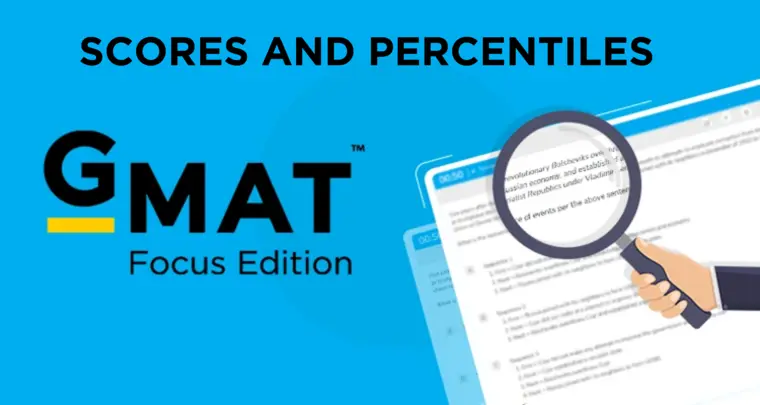Hurricane forecasters have difficulty determining maximum sustained surface-level winds. Reconnaissance aircraft usually obtain data from a flight level of 10,000 feet. However, in 1997, reconnaissance aircraft began deploying dropwindsondes in hurricanes. These weather instruments, carrying global positioning systems and affixed to parachutes, acquire detailed data from flight level down to surface level. Near the eyewall—the ring of towering thunderstorms surrounding a hurricane’s eye—the strongest winds are usually found at around 1,600 feet, about 20 percent stronger than at flight level. In the hurricanes’ outer reaches, however, wind maximums are typically found at higher elevations. The data also show that, near the eyewall, winds on top of a thirty-story building average about twenty miles per hour stronger than at ground level. Given the collective dropwindsonde data, forecasters typically estimate eyewall surface-level winds at about 90 percent of flight-level winds, with surface-level winds in the outer reaches at about 78 percent.
Hurricane Mitch in 1998, however, exhibited maximum flight-level winds no stronger than 150 miles per hour, yet dropwindsondes indicated much stronger surface-level winds. In this case, Mitch appeared to be weakening from the top down; the circulation at flight levels was decreasing but had yet to decrease at surface levels. This storm is a reminder that the typical estimates often need modification based on certain real-time factors, especially convective (warm-air updraft) intensity and sea-surface temperature.
Question 1
The passage most strongly suggests that circulation in hurricanes
A. weakens at the eyewall before it begins to weaken in the outer reaches of a storm
B. near the outer reaches is typically strongest at elevations above the usual flight level of reconnaissance aircraft
C. is typically the same from flight level down to surface level before the hurricane begins to weaken
D. is usually faster at flight level than it is at surface level after a storm has begun to weaken
E. will not increase if sea-surface temperatures remain constant
Question 2
The passage is primarily concerned with
A. describing various competing methods by which hurricane forecasters judge the accuracy of typical estimates of surface-level wind speeds
B. describing a method forecasters use to estimate surface-level wind speeds in hurricanes, while emphasizing that these estimates will sometimes require revision
C. explaining why it is that wind speeds vary according to altitude and position relative to the eyewall within a hurricane
D. explaining why advances in real-time data collection have precluded the need to estimate surface-level wind speeds in hurricanes
E. arguing that forecasters’ estimates of surface-level wind speeds in hurricanes tend to be accurate despite the limitations of data collected from reconnaissance aircraft
Question 3
Suppose that the windows on the top floor of a thirty-story building will shatter in 200 mile-per-hour winds. Under which of the following circumstances does the passage suggest that the windows would be most likely to break?
A. The building is in the outer reaches of a hurricane when surface-level winds reach 180 miles per hour.
B. The building is in the outer reaches of a hurricane when flight-level winds reach 200 miles per hour.
C. The building is in the eyewall of a hurricane when surface-level winds reach 150 miles per hour.
D. The building is in the eyewall of a hurricane when flight-level winds reach 200 miles per hour.
E. The building is in the eyewall of a hurricane when winds at 1,600 feet reach 200 miles per hour.
Solution
1. Passage Analysis:
Progressive Passage Analysis
| Text from Passage | Analysis |
|---|---|
| Hurricane forecasters have difficulty determining maximum sustained surface-level winds. | What it says: Scientists can’t easily figure out how fast winds are blowing at ground level in hurricanes. What it does: Introduces the main problem – establishes what’s difficult about hurricane forecasting. Source/Type: Factual statement about current limitations Connection to Previous Sentences: This is our starting point – no previous context. Visualization: Think of forecasters looking at a hurricane and saying “We need to know how fast the wind is at ground level, but we can’t measure it directly.” What We Know So Far: There’s a measurement problem with surface winds What We Don’t Know Yet: Why it’s difficult, what methods they use, how they solve it |
| Reconnaissance aircraft usually obtain data from a flight level of 10,000 feet. | What it says: The planes that study hurricanes fly at 10,000 feet to gather information. What it does: Explains the current method and reveals why there’s a problem. Source/Type: Factual description of standard procedure Connection to Previous Sentences: This directly explains WHY forecasters have difficulty – they measure wind at 10,000 feet but need to know surface-level wind. The problem is now clear: measuring high up vs. needing ground-level data. Visualization: Plane flying 10,000 feet above ocean surface, trying to understand what’s happening way down at sea level. Reading Strategy Insight: This sentence makes the passage LESS complex by explaining the logical reason for the difficulty mentioned in sentence 1. |
| However, in 1997, reconnaissance aircraft began deploying dropwindsondes in hurricanes. | What it says: Starting in 1997, hurricane-studying planes began using new instruments called dropwindsondes. What it does: Introduces the solution to the problem established in sentences 1-2. Source/Type: Historical fact about technological advancement Connection to Previous Sentences: The word “However” signals this is addressing the problem. We’ve established the difficulty (can’t measure surface winds from 10,000 feet), now here’s what changed in 1997. Visualization: Timeline: Before 1997 = problem, 1997 onward = new solution with dropwindsondes What We Know So Far: Problem (surface wind measurement), old method (10,000 foot flights), new solution (dropwindsondes starting 1997) What We Don’t Know Yet: How dropwindsondes work, what they revealed |
| These weather instruments, carrying global positioning systems and affixed to parachutes, acquire detailed data from flight level down to surface level. | What it says: Dropwindsondes are weather tools with GPS that use parachutes to collect detailed information as they fall from plane height all the way to the ocean surface. What it does: Explains how the solution works – fills in the technical details. Source/Type: Technical description of how the instruments function Connection to Previous Sentences: This elaborates on “dropwindsondes” from the previous sentence. Notice how the author helps us: instead of leaving “dropwindsondes” as mysterious jargon, they immediately explain what they are and how they work. Visualization: Instruments with parachutes dropping from 10,000 feet to sea level, collecting data at every altitude during the fall. Reading Strategy Insight: Feel relieved here – this is explanation, not new complexity. The passage is becoming clearer, not harder. |
| Near the eyewall—the ring of towering thunderstorms surrounding a hurricane’s eye—the strongest winds are usually found at around 1,600 feet, about 20 percent stronger than at flight level. | What it says: Close to the eyewall (the ring of storms around the hurricane’s center), the strongest winds occur at about 1,600 feet altitude, and these winds are about 20% stronger than winds at the 10,000-foot flight level. What it does: Reports a key finding from the dropwindsonde data. Source/Type: Scientific finding/data results Connection to Previous Sentences: This is what the dropwindsondes revealed! We can now see WHY the old method (measuring at 10,000 feet) was problematic – the strongest winds aren’t even at flight level. Visualization: • Flight level (10,000 feet): Wind speed = 100 mph • Strongest winds (1,600 feet): Wind speed = 120 mph (20% stronger) • Surface level: [We don’t know this yet] What We Know So Far: Maximum winds near eyewall occur at 1,600 feet, not at flight level |
| In the hurricanes’ outer reaches, however, wind maximums are typically found at higher elevations. | What it says: In the outer parts of hurricanes (away from the eyewall), the strongest winds are found at higher altitudes. What it does: Provides contrasting information – shows wind patterns vary by location in the hurricane. Source/Type: Additional scientific finding Connection to Previous Sentences: This contrasts with the previous sentence. Near eyewall: max winds at 1,600 feet vs. Outer areas: max winds at higher elevations. Visualization: • Near eyewall: strongest winds at 1,600 feet • Outer reaches: strongest winds at higher elevations (closer to or above 10,000 feet) Reading Strategy Insight: The author is building a complete picture of wind distribution in hurricanes – this adds nuance without contradicting previous information. |
| The data also show that, near the eyewall, winds on top of a thirty-story building average about twenty miles per hour stronger than at ground level. | What it says: The dropwindsonde data reveal that near the eyewall, winds at the height of a 30-story building are on average 20 mph stronger than winds at ground level. What it does: Provides another specific finding, using a relatable reference point (30-story building). Source/Type: Scientific data with concrete example Connection to Previous Sentences: This continues reporting dropwindsonde findings. Notice the author uses “thirty-story building” to make the altitude relatable instead of giving us another technical measurement. Visualization: • Ground level: Wind speed = 80 mph • 30-story building height: Wind speed = 100 mph • 1,600 feet (from earlier): Strongest winds = 120 mph Reading Strategy Insight: The passage is building a detailed wind profile from ground to flight level, all supporting the main point about measurement challenges. |
| Given the collective dropwindsonde data, forecasters typically estimate eyewall surface-level winds at about 90 percent of flight-level winds, with surface-level winds in the outer reaches at about 78 percent. | What it says: Based on all the dropwindsonde data, forecasters use these rules: near the eyewall, surface winds are about 90% of flight-level winds; in outer areas, surface winds are about 78% of flight-level winds. What it does: Provides the practical solution – converts all the technical data into simple formulas forecasters can use. Source/Type: Practical application/methodology based on research Connection to Previous Sentences: This is the payoff! All the complex data from previous sentences gets simplified into two easy percentages that solve the original problem. Visualization: • Flight level measurement: 100 mph • Eyewall surface estimate: 90 mph (90% × 100) • Outer reaches surface estimate: 78 mph (78% × 100) Reading Strategy Insight: Feel confident here – the passage just got much simpler. Complex technical findings → simple percentage rules. |
| Hurricane Mitch in 1998, however, exhibited maximum flight-level winds no stronger than 150 miles per hour, yet dropwindsondes indicated much stronger surface-level winds. | What it says: Hurricane Mitch in 1998 had flight-level winds of only 150 mph, but the dropwindsondes showed much stronger winds at surface level. What it does: Introduces an exception to the typical patterns established earlier. Source/Type: Specific case study/exception Connection to Previous Sentences: This contrasts with the “typical” estimates from the previous sentence. Normal pattern: surface winds weaker than flight-level winds vs. Mitch: surface winds stronger than flight-level winds. Visualization: • Mitch flight level: 150 mph • Typical expectation for surface: ~135 mph (90% of 150) • Actual Mitch surface level: much stronger than 150 mph What We Know So Far: The percentage rules don’t always work – Mitch was backwards What We Don’t Know Yet: Why Mitch was different |
| In this case, Mitch appeared to be weakening from the top down; the circulation at flight levels was decreasing but had yet to decrease at surface levels. | What it says: Mitch was getting weaker starting from the top – the spinning motion was slowing down at flight level but was still strong at surface level. What it does: Explains why Mitch was an exception – describes the unusual weakening pattern. Source/Type: Scientific explanation for the anomaly Connection to Previous Sentences: This directly explains the Mitch anomaly from the previous sentence. Again, the author helps us by immediately explaining the confusing exception. Visualization: Think of a spinning top that’s slowing down from the top while the bottom is still spinning fast. Reading Strategy Insight: The passage maintains its helpful pattern – introduce something puzzling, then immediately explain it. |
| This storm is a reminder that the typical estimates often need modification based on certain real-time factors, especially convective (warm-air updraft) intensity and sea-surface temperature. | What it says: Hurricane Mitch reminds us that the standard percentage rules often need adjustment based on current conditions, particularly warm-air updrafts and ocean temperature. What it does: Concludes by stating the broader lesson – the solution isn’t perfect and needs real-time adjustments. Source/Type: Author’s conclusion/practical takeaway Connection to Previous Sentences: This wraps up the Mitch example and connects it back to the main theme. The passage comes full circle: we started with a problem, got a solution, saw an exception, and now understand the solution’s limitations. Visualization: Forecasters using the 90%/78% rules as starting points, then adjusting based on current storm conditions. Overall Reading Strategy Insight: This passage followed a classic helpful structure: Problem → Solution → Exception → Refined Understanding. Each complex idea was explained, not just stated. |
2. Passage Summary:
Author’s Purpose:
To explain how hurricane forecasters solved a measurement problem and describe the limitations of their solution
Summary of Passage Structure:
In this passage, the author walks us through a scientific problem and its solution in clear steps:
- First, the author identifies the problem – forecasters can’t easily measure surface-level winds because they collect data from planes flying at 10,000 feet
- Next, the author introduces the solution – new instruments called dropwindsondes that were introduced in 1997 and can measure winds from flight level down to the surface
- Then, the author explains what these instruments revealed about wind patterns and how forecasters created simple percentage rules to estimate surface winds from flight-level measurements
- Finally, the author uses Hurricane Mitch as an example to show that these percentage rules don’t always work and need to be adjusted based on real-time conditions
Main Point:
While new technology has helped forecasters estimate surface-level hurricane winds much better than before, the standard formulas they developed still need adjustments based on current storm conditions because hurricanes don’t always follow typical patterns.
3. Question Analysis:
The question asks us to determine under which circumstances windows on the top floor of a 30-story building would be most likely to break, given that they shatter at 200 mph winds. This is a specific application question that requires us to use the wind data provided in the passage to calculate actual wind speeds at building height.
Connecting to Our Passage Analysis:
From our passage analysis, we identified several key pieces of information:
- Wind varies by altitude: The passage establishes that “winds on top of a thirty-story building average about twenty miles per hour stronger than at ground level” near the eyewall
- Location matters: Wind patterns differ between the eyewall area and outer reaches of hurricanes
- Conversion formulas: Forecasters estimate “eyewall surface-level winds at about 90 percent of flight-level winds, with surface-level winds in the outer reaches at about 78 percent”
- Altitude effects: Near the eyewall, “the strongest winds are usually found at around 1,600 feet, about 20 percent stronger than at flight level”
Prethinking:
To find when windows would break, I need to calculate the actual wind speed at the top of a 30-story building (approximately 300-400 feet high) in each scenario. The building-height winds will be:
- 20 mph stronger than surface winds (near eyewall)
- Different in outer reaches vs. eyewall areas
- Calculable from the given flight-level or surface-level measurements using the passage’s data
I should look for the scenario that results in building-height winds exceeding 200 mph.
Answer Choices Explained
A. The building is in the outer reaches of a hurricane when surface-level winds reach 180 miles per hour.
Why It’s Wrong:
- This scenario places the building in the outer reaches where wind patterns are different from the eyewall
- The passage states that in outer reaches, \”wind maximums are typically found at higher elevations,\” suggesting less dramatic differences between surface and building height
- Even adding 20 mph to 180 mph surface winds would only give 200 mph at building height, which is the threshold, not clearly above it
Common Student Mistakes:
- Do students assume the 20 mph building-height difference applies everywhere in the hurricane? → The passage specifically states this applies \”near the eyewall,\” not in outer reaches
- Do students think 200 mph surface winds would definitely break the windows? → Remember we need winds at building height, not surface level, to exceed 200 mph
B. The building is in the outer reaches of a hurricane when flight-level winds reach 200 miles per hour.
Why It’s Wrong:
- This occurs in the outer reaches where the 78% conversion rate applies, meaning surface winds would be about 156 mph (78% of 200 mph)
- The 20 mph building-height differential may not apply in outer reaches as strongly as near the eyewall
- Even if it did apply, 156 + 20 = 176 mph, well below the 200 mph threshold
Common Student Mistakes:
- Do students confuse flight-level winds with building-height winds? → Flight level is 10,000 feet; building height is only about 300-400 feet
- Do students apply eyewall wind patterns to outer reaches? → The passage clearly distinguishes between these two hurricane regions
C. The building is in the eyewall of a hurricane when surface-level winds reach 150 miles per hour.
Why It’s Wrong:
- While this is in the eyewall where the 20 mph building differential applies, 150 mph surface winds + 20 mph = 170 mph at building height
- 170 mph is still 30 mph below the 200 mph threshold needed to break the windows
- This doesn’t provide enough wind speed even with the altitude adjustment
Common Student Mistakes:
- Do students forget to add the building-height differential? → The passage specifically mentions winds are stronger at building height than at surface level
- Do students assume surface-level winds are the same as building-height winds? → The passage clearly states there’s a 20 mph difference near the eyewall
D. The building is in the eyewall of a hurricane when flight-level winds reach 200 miles per hour.
Why It’s Right:
- This scenario occurs in the eyewall where the building-height differential of 20 mph applies
- Flight-level winds of 200 mph convert to surface winds of about 180 mph (90% of 200 mph based on the eyewall conversion rate)
- Building-height winds would be surface winds plus 20 mph: 180 + 20 = 200 mph, exactly at the breaking threshold
- This gives the highest building-height wind speed of all the scenarios
Key Evidence: \”Given the collective dropwindsonde data, forecasters typically estimate eyewall surface-level winds at about 90 percent of flight-level winds\” and \”near the eyewall, winds on top of a thirty-story building average about twenty miles per hour stronger than at ground level.\”
E. The building is in the eyewall of a hurricane when winds at 1,600 feet reach 200 miles per hour.
Why It’s Wrong:
- While 1,600 feet is where maximum winds occur near the eyewall, this is higher than a 30-story building (about 300-400 feet)
- The passage doesn’t provide conversion data from 1,600-foot winds to building-height winds
- We cannot reliably calculate building-height winds from this measurement without additional information
Common Student Mistakes:
- Do students confuse the altitude of maximum winds with building height? → 1,600 feet is much higher than a 30-story building
- Do students assume winds decrease linearly with altitude? → The passage shows wind patterns are complex and don’t follow simple linear relationships














